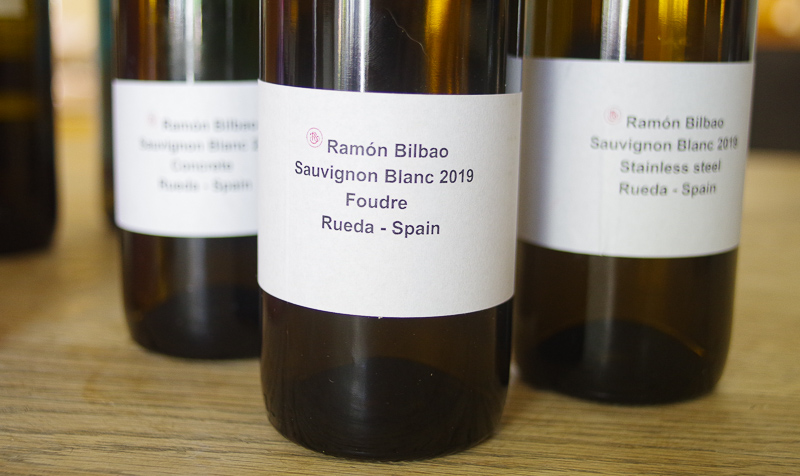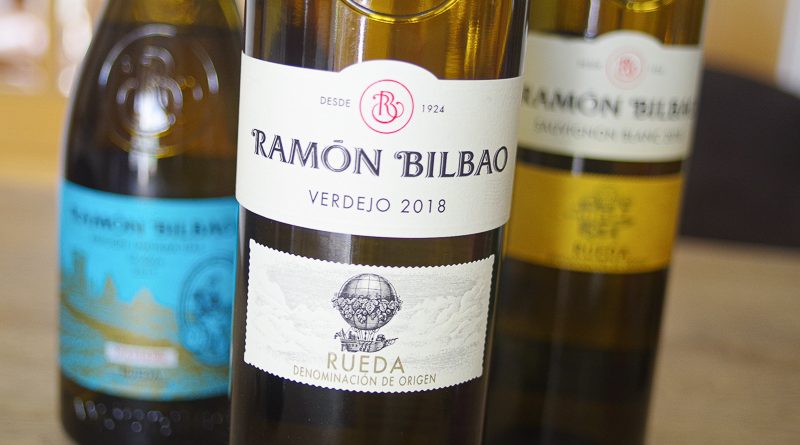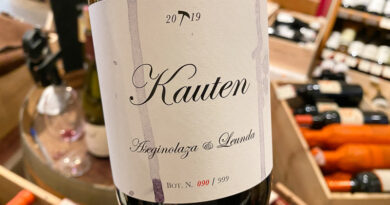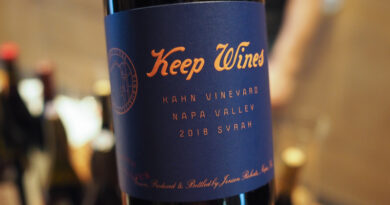Ramón Bilbao in Rueda
Rioja winery Ramón Bilbao – since 1999 part of large drinks company Zamora – have been in business for almost a century now, but have lately expanded their sights. Their latest venture is in Rueda, a project initiated in 2015. They now have a substantial 60 hectares of vines planted and a new cellar, and will harvest the first grapes from these vineyards in 2020. But they have been making wines for the last six years in the region in a partnership with local winery Diez Siglos de Verdejo (a cooperative founded in 2009).
Ramó Bilbao’s focus here is on white wines from Sauvignon Blanc and Verdejo. Rueda is unusual in that it’s a major Spanish region that’s almost exclusively focused on white wines (96% of the vineyard area), with Verdejo traditionally being the focus. Over recent years many of Spain’s larger wine groups have invested in the region.
Together with a number of other UK wine journos I hopped on a Zoom tasting with Rodolfo Bastida (chief winemaker) and Sara Bañuelos (Rueda winemaker) to explore their work with these two varieties. They explained that their goal in each region they work to fit their wines with the style and personality of each region. Rueda is a high plateau at around 800 metres, and the soils are free-draining gravels that were previously riverbed. Their farming is sustainable, but they are working towards organics.
Verdejo arrived in Rueda in the 11th century. The grape travelled to Spain from north Africa, and it has found a good home here, where it seems well adapted to the climate and soils. This is a dry, windy area and there are few problems with diseases. The climate is Mediterranean, but the altitude gives it aspects of a continental climate. It’s also very sunny, with 2600 sun hours a year. Springs are short (there is some late frost risk) and are followed by hot summers. Because of the altitude, there’s a big diurnal shift in temperatures which helps keep the wines fresh.
In contrast to Verdejo, Sauvignon Blanc is not all that well adapted to the region. It makes up just 6% of the Rueda vineyard area (Verdejo is 87%). Sauvignon doesn’t like drought stress and is susceptible to sunburn. So they plant Sauvignon where the soils have better water-holding capacity. And, of course, irrigation is needed here. They manage this carefully using a smart irrigation system, with soil moisture probes to help make decisions about when and how much to water.
The profile of the region’s wines has changed a lot in the last 50 years. Back in the day they were made in an oxidative style, and Palomino featured heavily (aside: these wines sound quite interesting!). It wasn’t until the 1970s that the region started making wines in a fresh, young, fruit-driven style.
Sara explained that her winemaking philosophy has three principals. First, she tries to avoid oxygen at the press stage and in the early stages of winemaking. Second, she works with lees for all the wines. Third, she uses different materials for ageing the wines, to give more texture and interest.
We tried a couple of their Verdejo wines:
Ramón Bilbao Verdejo 2018 Rueda, Spain
£11.95 Great Western Wine
Night harvested. Fermented in stainless steel tanks at 16 C. The wine is kept on the lees. This is pretty, rounded and textural with bright citrus and pear fruit. Crisp and pure, and slightly saline, with nice acidity under the clean fruit. Has some texture, too. 89/100
Ramón Bilbao Lias Verdejo 2017
£15.00 Great Western Wine
Made from 19-year-old vines on the Finca las Amedias estate, with extended lees contact. Fermented in concrete, at 16 C, and then goes to French and Hungarian oak for ageing. This is bright and rounded with some vanilla notes from the oak, although they aren’t too obtrusive. There’s nice texture here and a sense of refinement, showing pear, apple and citrus notes. Polished and appealing, if you like coconut and vanilla. 88/100
(I asked why they didn’t ferment in barrel if they are putting the wine in barrel – when a white wine is fermented in barrel it actually picks up less oak character than one fermented in a tank and then put into barrel later. Their response was that they didn’t like the results of barrel-fermenting Verdejo, and also that they couldn’t control the fermentation temperature in a barrel. I think the oak character in this wine is a bit off-putting.)
Ramón Bilbao Sauvignon Blanc 2018 Rueda, Spain
13% alcohol
£11.95 Great Western Wine
Harvested at night (10 C versus 30 C during the daytime). Fermented in stainless steel, concrete and foudres. Started at 16 C, then it is brought down to 14 C. Microoxygenation is used during the fermentation because Sauvignon tends to reduction. The wine is kept on lees until bottling. This is bright and fresh, with some nice texture to the citrus fruit, and a hint of fig and pear richness. There’s a slightly stony quality here. It’s not overly aromatic, but has nice palate weight. 88/100

We then tried the three different components of the 2019 vintage: Sauvignon fermented in steel, concrete and large oak. The final blend is a third of each.
Sauvignon Blanc 2019 – aged in concrete
Nice texture here with a bit of stoniness and harmonious fruit. There’s a purity. It’s less aromatic than the steel-fermented wine but it has more volume in the mouth and better texture.
Sauvignon Blanc 2019 – aged in stainless steel
This is fresh and floral with bright aromatics. Subtle green with some passionfruit notes. This is bright and fruit-driven. Very attractive in a fruity, primary style.
Sauvignon Blanc 2019 – aged in foudre
Fresh and bright with lovely aromatics. Very pretty and expressive with nice weight. Has some green notes too. Quite taut and elegant.
UK agent: Enotria Coe




